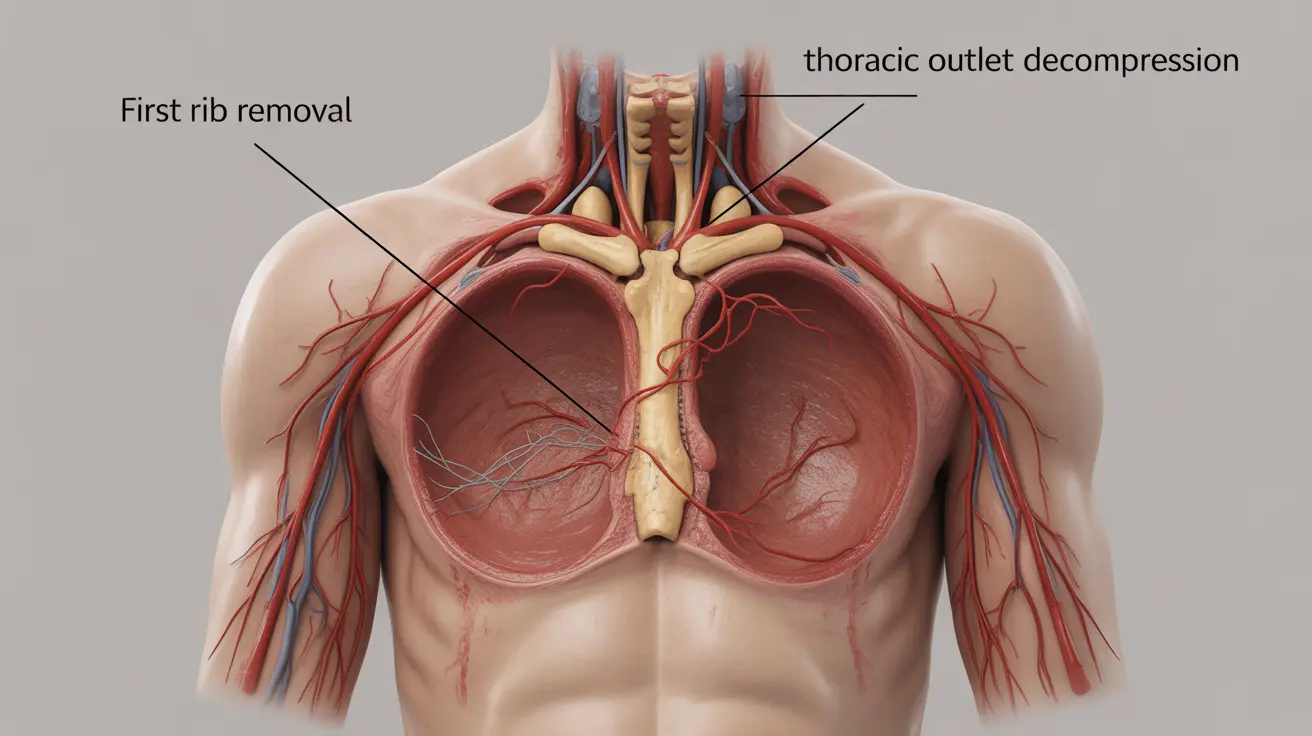Thoracic outlet decompression surgery is a specialized surgical procedure designed to relieve pressure on the nerves and blood vessels passing through the thoracic outlet—the space between your collarbone and first rib. This important surgical intervention helps patients who have failed conservative treatments for thoracic outlet syndrome (TOS) and are experiencing persistent symptoms that affect their quality of life.
For many patients dealing with chronic pain, numbness, or circulation problems in their arms and hands, this surgery can provide significant relief when other treatments haven't been successful. Understanding what the surgery entails, its benefits, and recovery process is crucial for anyone considering this treatment option.
Understanding the Need for Surgical Intervention
Before considering thoracic outlet decompression surgery, patients typically undergo extensive evaluation and conservative treatment. The decision to proceed with surgery is based on several factors, including:
- Persistent arm pain and numbness
- Muscle weakness in the affected arm
- Blood flow problems causing discoloration or cold sensitivity
- Failed response to physical therapy and medications
- Significant impact on daily activities and quality of life
Surgical Approaches and Techniques
Thoracic outlet decompression surgery can be performed using different approaches, depending on the specific type of TOS and the anatomical structures involved. The main surgical techniques include:
Transaxillary Approach
This technique involves making an incision in the armpit area to access and remove the first rib, helping to create more space in the thoracic outlet. It's particularly effective for neurogenic TOS cases.
Supraclavicular Approach
This method accesses the thoracic outlet from above the collarbone, allowing surgeons to address compressed nerves and blood vessels while removing any fibrous bands or cervical ribs that may be causing compression.
The Surgical Procedure
During thoracic outlet decompression surgery, the surgeon typically:
- Removes the first rib to create more space
- Releases tight muscles and fibrous bands
- Repairs or removes any anomalous structures
- Ensures proper blood flow and nerve function
- Addresses any vascular complications if present
Post-Surgical Recovery and Rehabilitation
Recovery from thoracic outlet decompression surgery requires patience and dedication to rehabilitation. The process typically involves:
- Initial hospital stay of 2-3 days
- Gradual return to normal activities over 8-12 weeks
- Structured physical therapy program
- Regular follow-up appointments
- Modified activity restrictions during healing
Potential Risks and Complications
As with any surgical procedure, thoracic outlet decompression surgery carries certain risks, including:
- Infection at the surgical site
- Bleeding or hematoma formation
- Nerve injury or irritation
- Temporary or permanent numbness
- Potential for incomplete symptom relief
Long-Term Outcomes and Prevention
Success rates for thoracic outlet decompression surgery vary, but many patients experience significant improvement in their symptoms. Long-term success often depends on:
- Proper patient selection
- Surgical technique used
- Commitment to rehabilitation
- Lifestyle modifications
- Ongoing preventive measures
Frequently Asked Questions
- What symptoms indicate the need for thoracic outlet decompression surgery?
Surgery is typically indicated when patients experience persistent arm pain, numbness, muscle weakness, and circulation problems that haven't improved with conservative treatment over 3-6 months. Severe cases causing significant disability or vascular complications may require more immediate surgical intervention.
- What are the different surgical approaches used in thoracic outlet decompression surgery?
The main approaches are the transaxillary approach (through the armpit) and the supraclavicular approach (above the collarbone). The choice depends on the type of TOS, patient anatomy, and surgeon preference. Each approach offers specific advantages for accessing and treating different aspects of thoracic outlet compression.
- How long is the recovery time after thoracic outlet decompression surgery and what does rehabilitation involve?
Recovery typically takes 8-12 weeks, with initial rehabilitation starting in the hospital. The process includes gradual progression from gentle range-of-motion exercises to more advanced strengthening activities. Physical therapy is crucial and usually continues for several months post-surgery.
- What are the risks and possible complications associated with thoracic outlet decompression surgery?
Potential complications include infection, bleeding, nerve injury, temporary or permanent numbness, and incomplete symptom relief. Some patients may experience post-operative pain or stiffness. Serious complications are rare but can include pneumothorax or injury to nearby structures.
- Can thoracic outlet syndrome return after decompression surgery and how can recurrence be prevented?
While recurrence is possible, it can often be prevented through proper rehabilitation, maintaining good posture, avoiding repetitive arm movements, and following ergonomic principles. Regular exercise and physical therapy exercises can help maintain the benefits of surgery and prevent symptom return.




